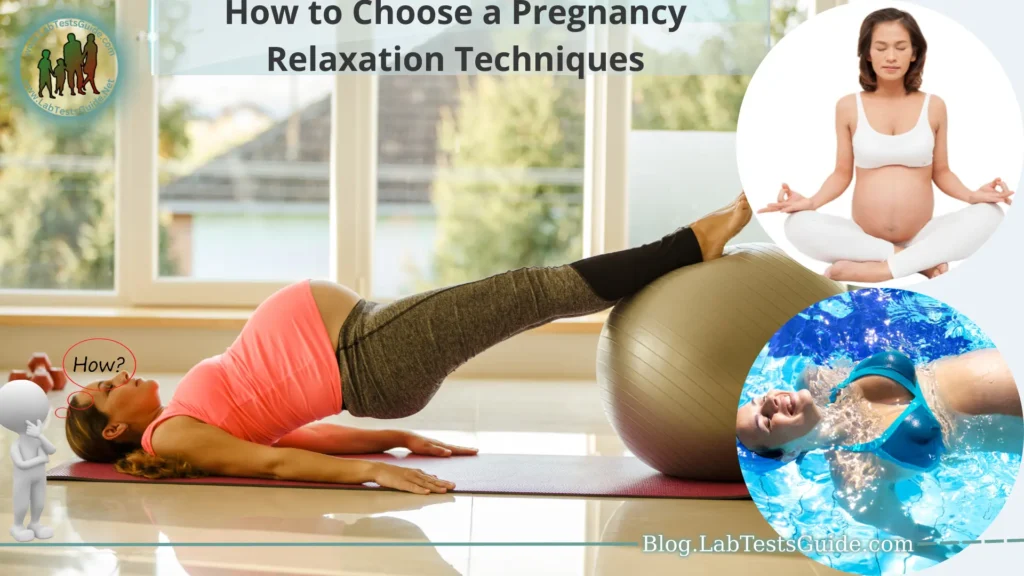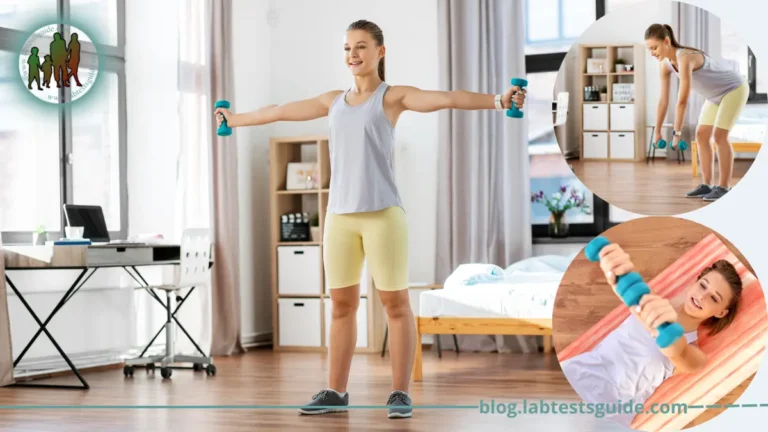During pregnancy, relaxation becomes even more crucial as your body undergoes significant changes and you prepare for the arrival of your baby. Pregnancy relaxation techniques can help alleviate stress, promote well-being, and enhance the overall experience of pregnancy.

This guide aims to provide you with valuable information on how to choose a pregnancy relaxation technique that suits your needs and preferences. By exploring different techniques and considering various factors, you can create a personalized relaxation routine that supports your physical, mental, and emotional well-being throughout your pregnancy journey.
Remember that every pregnancy is unique, and what works for one person may not work for another. It’s essential to listen to your body, trust your instincts and make choices that feel right for you. Let’s delve into the world of pregnancy relaxation techniques and embark on a journey of finding the perfect technique to support your well-being during this special time.
Understanding Different Pregnancy Relaxation Techniques:
The most common techniques and how they can benefit you during this special time.
Breathing Techniques:
- Diaphragmatic Breathing: Also known as deep belly breathing, this technique involves breathing deeply into your diaphragm, allowing your abdomen to rise and fall with each breath. It promotes relaxation, oxygenates your body, and reduces tension.
- Box Breathing: This technique involves inhaling slowly for a count of four, holding the breath for a count of four, exhaling for a count of four, and holding the breath again for a count of four. It helps regulate breathing and calm the nervous system.
- 4-7-8 Breathing: This technique involves inhaling deeply through your nose for a count of four, holding your breath for a count of seven, and exhaling slowly through your mouth for a count of eight. It can induce a deep state of relaxation and aid in falling asleep.
Meditation and Mindfulness:
- Body Scan Meditation: This practice involves mentally scanning your body from head to toe, focusing on each body part and releasing any tension or discomfort. It promotes body awareness and relaxation.
- Loving-Kindness Meditation: This meditation cultivates feelings of love, compassion, and well-wishes towards yourself, your baby, and others. It helps foster positive emotions and reduce stress.
- Mindful Walking: This technique involves walking slowly and intentionally, paying attention to each step, your body’s movements, and the environment around you. It promotes relaxation and grounding.
- Progressive Muscle Relaxation: This technique involves systematically tensing and then releasing different muscle groups in your body. By consciously relaxing your muscles, you can release tension and promote a state of deep relaxation.
- Yoga and Stretching: Prenatal yoga and gentle stretching exercises can help improve flexibility, alleviate muscle tension, and promote relaxation. They also focus on breathing techniques and gentle movements that are safe and beneficial during pregnancy.
- Visualization and Guided Imagery: Visualization involves creating mental images of peaceful and calming scenes or positive outcomes. Guided imagery uses recorded scripts or audio guides to lead you through visualizations. These techniques can reduce stress, promote relaxation, and enhance a sense of well-being.
- Hydrotherapy: Immersing yourself in water, such as taking a warm bath or swimming, can provide physical and emotional relaxation. The buoyancy of water eases pressure on joints and muscles, promoting relaxation and relieving discomfort.
- Acupuncture and Acupressure: These practices involve stimulating specific points on the body to promote relaxation and balance energy flow. Acupuncture uses thin needles, while acupressure applies pressure with fingers or massage techniques.
- Music Therapy: Listening to calming and soothing music can help reduce stress, lower blood pressure, and create a peaceful environment for relaxation. Choose music that resonates with you and promotes a sense of tranquility.
- Aromatherapy: Using essential oils, such as lavender or chamomile, can create a relaxing atmosphere and promote a sense of calm. Inhalation or gentle massage with diluted oils can help reduce anxiety and enhance relaxation.
Each of these techniques offers unique benefits, and you may find that a combination of techniques works best for you. It’s important to listen to your body, try different techniques, and choose the ones that resonate with you and bring you the most relaxation and comfort during your pregnancy journey.
Factors to Consider When Choosing a Pregnancy Relaxation Technique:
Here are some important factors to consider.
- Personal Preferences and Comfort: Choose a technique that aligns with your personal preferences. For example, if you enjoy gentle movement, you may prefer prenatal yoga or stretching. If you find solace in stillness and mental focus, meditation or breathing techniques may be more suitable. Consider what makes you feel comfortable and relaxed.
- Safety and Medical Considerations: Consult with your healthcare provider before starting any new relaxation technique, especially if you have any underlying health conditions or complications during pregnancy. Certain techniques, like specific yoga poses or acupuncture, may require modifications or be contraindicated in some situations.
- Accessibility and Availability: Consider the availability of resources and facilities required for certain techniques. For instance, if you choose hydrotherapy, ensure you have access to a pool or a bathtub. If you’re interested in attending classes, check for their availability in your area.
- Time Commitment and Convenience: Assess the time commitment required for each technique. Some techniques, like breathing exercises and mindfulness practices, can be easily incorporated into your daily routine. Others, such as attending classes or appointments, may require more time and scheduling adjustments. Choose a technique that fits well into your lifestyle and schedule.
- Cost and Budget: Consider the financial implications associated with specific relaxation techniques. Some techniques, such as guided meditation apps or professional sessions like acupuncture, may have associated costs. Evaluate your budget and choose techniques that are within your means or explore free or low-cost alternatives.
- Support and Guidance: Determine the level of guidance and support you desire. Some techniques, like prenatal yoga or meditation, can be practiced independently with the help of online resources or apps. Others may benefit from the guidance of a certified instructor or practitioner who can provide personalized support and ensure correct technique execution.
- Professional Recommendations: Seek advice from your healthcare provider or prenatal care team regarding relaxation techniques that are safe and suitable for you. They can provide valuable insights based on your medical history, individual needs, and any specific considerations related to your pregnancy.
By considering these factors, you can make an informed decision and choose a pregnancy relaxation technique that best suits your needs, preferences, and circumstances. Remember, the goal is to find a technique that helps you relax, reduces stress, and promotes your overall well-being during this special time.
Assessing Your Needs and Goals:
Here are some aspects to consider during this assessment.
- Identifying Stress Triggers: Reflect on the factors that contribute to stress or anxiety in your life. This may include work-related pressures, relationship dynamics, financial concerns, or pregnancy-related worries. Identifying these triggers can help you choose techniques that specifically target and alleviate the sources of stress.
- Addressing Pregnancy Symptoms and Discomforts: Consider any physical symptoms or discomforts you are experiencing during pregnancy, such as back pain, muscle tension, nausea, or insomnia. Look for relaxation techniques that can help alleviate these specific symptoms and provide relief.
- Promoting Better Sleep: Sleep disturbances are common during pregnancy. If you’re struggling with insomnia or disrupted sleep, prioritize relaxation techniques that promote better sleep quality. Techniques like meditation, breathing exercises, and progressive muscle relaxation can be beneficial in preparing your mind and body for restful sleep.
- Preparing for Labor and Delivery: If your goal is to prepare for labor and delivery, focus on relaxation techniques that enhance your coping skills, promote relaxation during contractions, and cultivate a positive mindset. Techniques like breathing exercises, visualization, and prenatal yoga can be particularly helpful in building mental and physical resilience.
- Enhancing Bonding with the Baby: Pregnancy can be a time to connect with your baby on a deeper level. Look for relaxation techniques that facilitate this bonding experience. Techniques like guided imagery, meditation, or gentle movements that focus on connecting with your baby can help strengthen the bond between you and your little one.
By assessing your needs and goals, you can choose relaxation techniques that specifically target areas of concern and support your overall well-being during pregnancy. Remember, each pregnancy journey is unique, so it’s important to listen to your body and select techniques that resonate with you and meet your specific needs.
Consultation and Guidance:
Here are some avenues to consider for consultation and guidance.
- Healthcare Professionals: Consult with your healthcare provider, such as your obstetrician or midwife, about your interest in incorporating relaxation techniques during pregnancy. They can provide valuable insights, take into account any specific medical considerations or contraindications, and offer recommendations based on your individual circumstances.
- Prenatal Classes and Support Groups: Joining prenatal classes or support groups can be beneficial in receiving guidance and support from experts and other expectant parents. Look for classes that specifically focus on relaxation techniques, such as prenatal yoga or childbirth education classes. These settings provide opportunities to learn and practice techniques under the guidance of trained professionals.
- Certified Instructors and Practitioners: Engage with certified instructors or practitioners who specialize in pregnancy relaxation techniques. These professionals have expertise in providing personalized guidance and support. For example, you can seek guidance from certified yoga instructors, meditation teachers, or practitioners of acupuncture or acupressure who have experience working with pregnant individuals.
- Online Resources and Apps: Explore reputable online resources and smartphone apps that offer guidance and instruction on pregnancy relaxation techniques. Many platforms provide guided meditation sessions, breathing exercises, and prenatal yoga routines that can be accessed conveniently from home. Ensure that the resources you choose are reliable and recommended for pregnant individuals.
By seeking consultation and guidance, you can gain insights from professionals, connect with a supportive community, and receive personalized recommendations that are tailored to your specific needs and circumstances. This ensures that you practice relaxation techniques safely and effectively throughout your pregnancy journey.
Trial and Exploration:
Here are some steps to help you in this process.
- Trying Different Techniques: Start by trying out a variety of relaxation techniques that align with your interests and goals. Experiment with breathing exercises, meditation practices, yoga routines, guided imagery, or other techniques you find appealing. Give each technique a fair chance by practicing it consistently for a period of time to gauge its effectiveness.
- Keeping a Journal or Log: Maintain a journal or log to track your experiences with each technique. Note down the techniques you try, the duration of practice, and how they make you feel physically, mentally, and emotionally. Pay attention to any positive changes, reduction in stress levels, improvements in sleep, or other benefits you observe.
- Noting Benefits and Challenges: Reflect on the benefits you experience with each technique. Consider whether it helps you relax, reduces stress, alleviates pregnancy discomforts, or meets your specific goals. Also, take note of any challenges you encounter, such as difficulty in finding time for practice or feeling uncomfortable with certain techniques.
- Modifying and Adapting Techniques: Feel free to modify and adapt techniques to suit your individual needs. For example, you might need to adjust certain yoga poses or breathing exercises to accommodate your growing belly. Listen to your body and make modifications that ensure your comfort and safety. Seek guidance from certified instructors or practitioners as needed.
Through trial and exploration, you will discover which relaxation techniques resonate most with you and provide the desired benefits. Remember that it’s a journey of self-discovery, and what works for others may not work for you. Be patient, open-minded, and adaptable as you navigate through different techniques to find your preferred relaxation routine.
Creating a Relaxation Routine:
Here are some steps to help you create a relaxation routine.
- Establish Regular Practice: Determine a regular time slot or specific days of the week dedicated to your relaxation practice. Consistency is key, so choose a time that works well with your schedule and commit to it. Aim for at least a few minutes of practice every day to establish a routine.
- Integrating Techniques into Daily Life: Find ways to incorporate relaxation techniques into your daily activities. For example, practice deep breathing exercises while waiting in line or during moments of stress. Take short breaks during the day to practice mindfulness or meditation. Look for opportunities to infuse relaxation into your routine seamlessly.
- Combining Multiple Techniques: Consider combining different relaxation techniques to create a holistic practice. For example, you could start with a breathing exercise, followed by a short meditation session, and conclude with a gentle stretch or yoga pose. Experiment with different combinations to find what works best for you.
- Setting Realistic Goals and Expectations: Set realistic goals for your relaxation routine. Understand that the benefits of relaxation may accumulate over time rather than being immediate. Be patient with yourself and acknowledge that some days may be more challenging than others. Focus on the process of relaxation rather than solely on the outcome.
Remember to prioritize self-care and make your relaxation routine a non-negotiable part of your day. Communicate your needs and the importance of your relaxation time to your loved ones, ensuring you have the space and support to engage in your practice.
Conclusion:
Choosing suitable pregnancy relaxation techniques involves considering your individual needs and consulting your healthcare provider. Research various techniques like deep breathing, prenatal yoga, meditation, and massage, while prioritizing safety and personal preference. Attending classes and creating a consistent routine can enhance the effectiveness of chosen techniques. Listen to your body’s response and be open to combining methods for a holistic approach. Ultimately, the goal is to alleviate stress, promote well-being, and ensure a healthy pregnancy journey.







One Comment